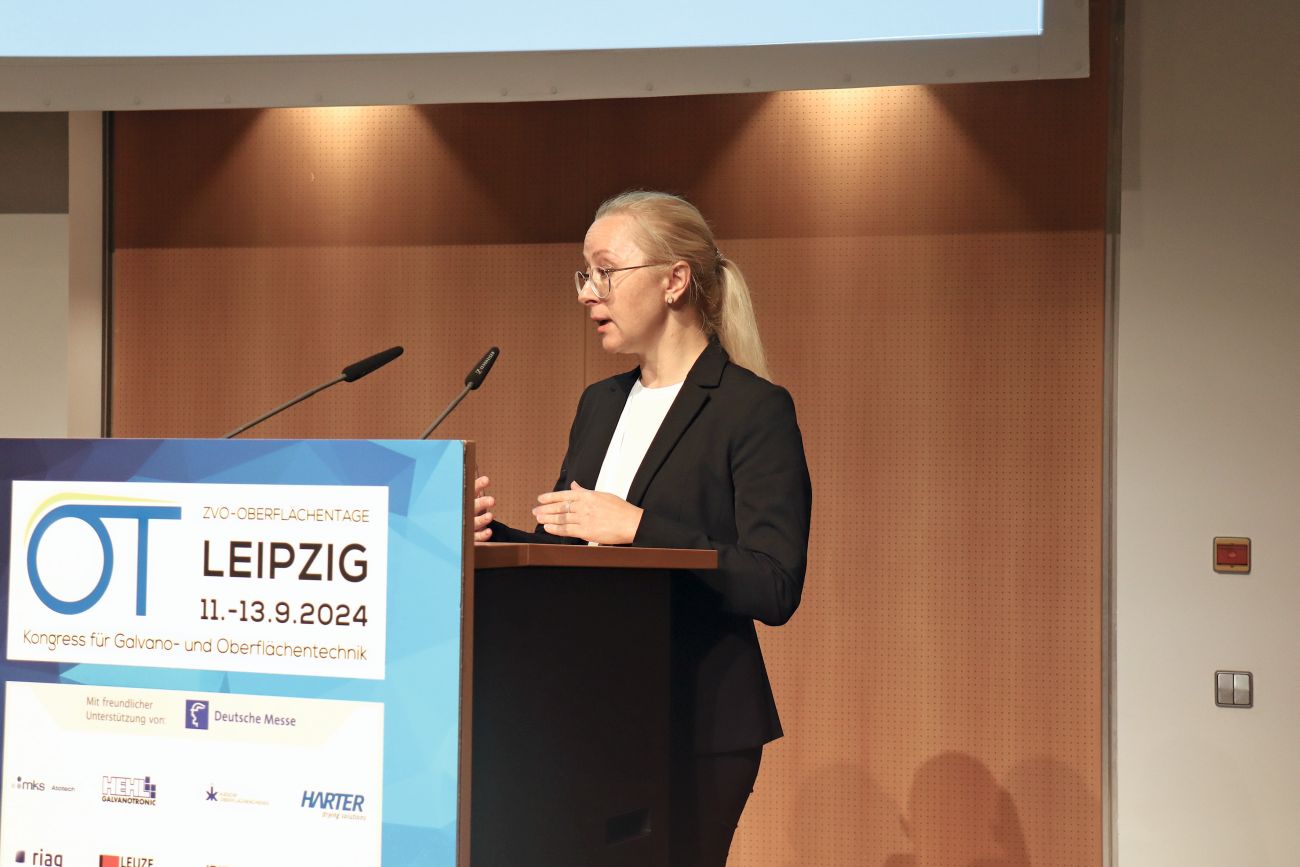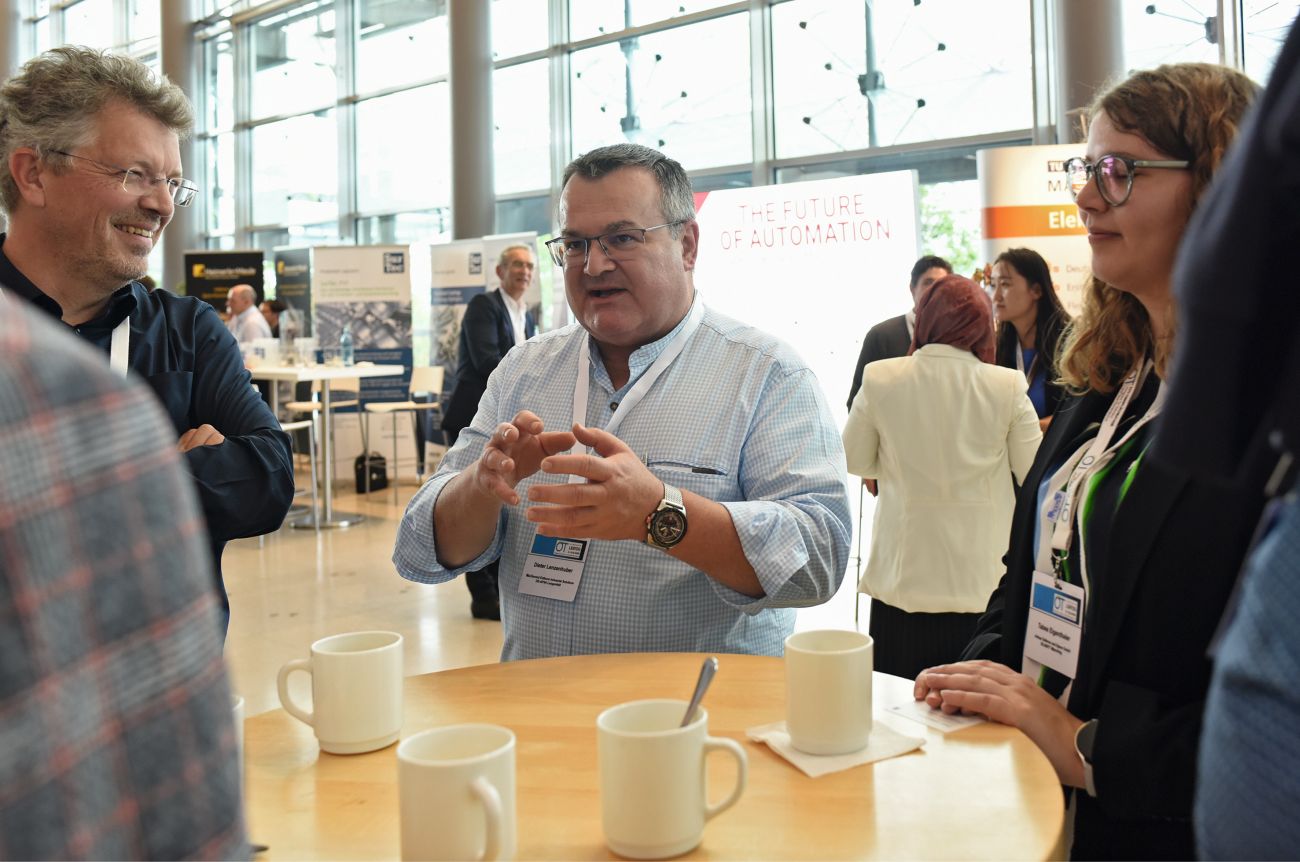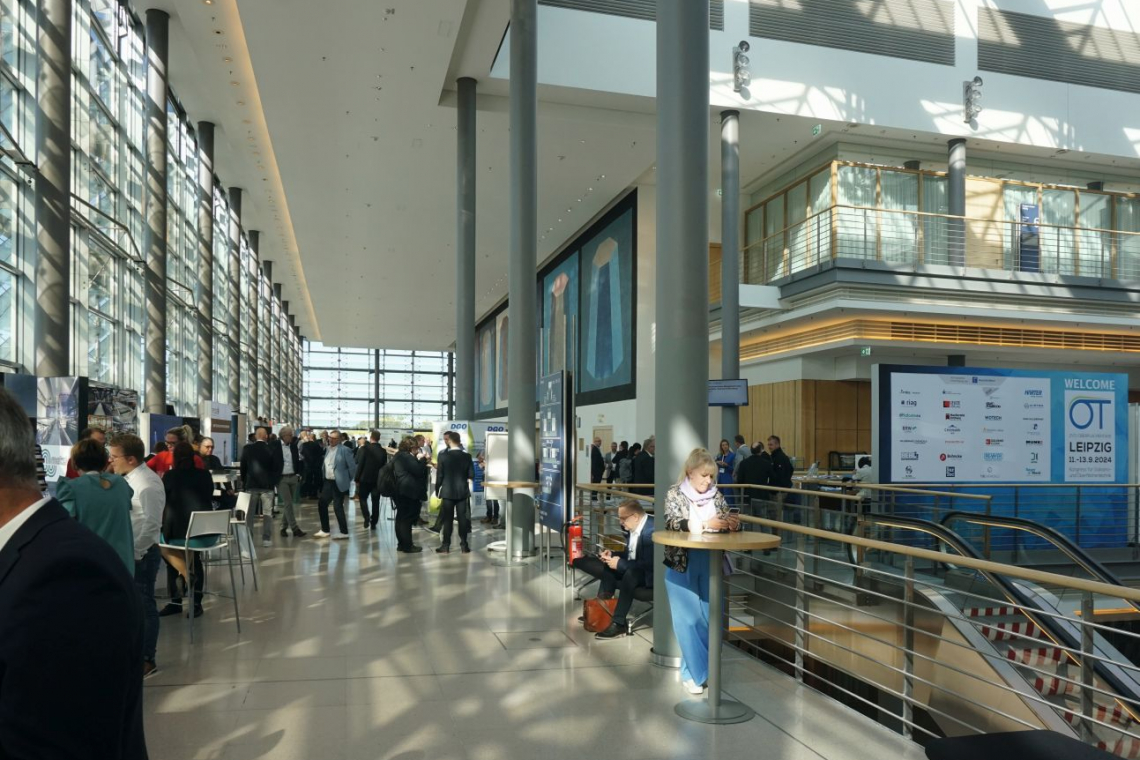New requirements, future topics, hydrogen
- Part 3 - We live in exciting times. The background to this are the technological upheavals in mobility, the energy industry, sustainability and information technology. These developments are also driving electroplating and surface technology to develop innovations that will help them achieve a breakthrough. Part 3 of our coverage of the Surface Technology Days presents some of these future topics, ranging from coatings for e-mobility to environmentally friendly nickel coatings and water electrolysis.
New requirements for electroplating and surface technology Anodic coatings as a potential barrier
As Dr. Julia Dukwen from Aalberts Surface Technologies GmbH explained, aluminum components for numerous applications in e-mobility must also meet electrical insulation requirements in addition to common requirements. Anodization is the method of choice for creating such potential barriers on aluminium components for mass applications.
In her lecture, Dukwen presented the electrically insulating properties of various anodic layers on aluminium materials as well as methods for characterization. The electrical insulation properties of anodic coatings are characterized by the breakdown voltage values. The following test results can be summarized:
- The breakdown voltage increases with increasing anodization layer thickness; not linearly, but degressively.
- Alloys with a high silicon and heavy metal content exhibit lower breakdown values.
- The condition of the material (grain structure and concentration of alloying elements) influences the breakdown voltage.
- A thicker barrier layer of the oxalic acid layer leads to a higher breakdown voltage.
- Closing the pores in the hot water compaction increases the breakdown voltage (exception: HC on 6082).
- Organic layers also improve the insulation effect.
This data is intended to assist in the selection of a suitable aluminium alloy and anodization process for applications with a potential barrier.
 Dr. Julia Dukwen from Aalberts Surface Technologies GmbH spoke in her presentation about potential barriers on aluminium components created by anodization, which are required in e-mobility - Photo: ZVO/Sven Hobbiesiefken
Dr. Julia Dukwen from Aalberts Surface Technologies GmbH spoke in her presentation about potential barriers on aluminium components created by anodization, which are required in e-mobility - Photo: ZVO/Sven Hobbiesiefken
Future topics in surface technology II Cr(VI)-free black nickel coatings with customized properties
Electroless deposition of electroless nickel with black coloration offers an alternative to black chromium plating, explained Toni Munteanu, Innovent e. V., in his presentation on "Cr(VI)-free black nickel coatings with customized properties for the optics and laser industry". Munteanu reported on investigations carried out as part of a research project into the blackening of nickel coatings. In particular, the aim was to adapt optical properties for use in the optics and laser technology industry. Spiral staircase of the Conference Center Leipzig, the venue of this year's Surface Days - Photo: Robert Piterek
Spiral staircase of the Conference Center Leipzig, the venue of this year's Surface Days - Photo: Robert Piterek
For the black coloration of the electroless nickel layers, commercially available coloring solutions known from literature and an own synthesized coloring solution were examined and compared with each other. Furthermore, the question of what possibilities there are for pre- and post-treatment of substrates in order to specifically influence the optical properties was investigated. In addition to the application of SiOx coatings using plasma treatment and flame treatment techniques and the application of sol-gel coatings, sandblasting processes were used as a pre-treatment step.
Low phos electroless nickel coatings can be blackened better than nickel coatings with a higher phosphorus incorporation rate. Absorption measurements in the 200-2200 nm range showed 85 to 97% absorption. The process is RoHS (Restriction of Hazardous Substances) compliant: no Cr(VI), Pb and Cd were detected. Values for emission limits are not yet available.
Removal of particles from rinsing baths and treated waste water
The method presented by Walter Masur of Serfilco GmbH based on a ceramic molecular filter material (dried and fired beads) is easy to use and opens up the possibility of drastically reducing the burden on the increasingly scarce resource of water. Tailor-made Cera-Mol materials remove various residues, such as Cera-Mol-C (removal of organic substances and COD), Cera-Mol-M (metal residues Cu, Ni, Zn, Sn, Cd) or Cera-Mol-AN (removal of sulphates, chlorides, phosphates, nitrites, fluorides). This allows valuable substances to be recovered from rinsing baths and waste water. The process is carried out by adsorption, absorption and chemical reaction.
On the equipment side, a standardized SerPURE system consisting of 2/3/4 or more filter containers including a flow-optimized pump is required. The process requires a detailed analysis (ingredients, concentration, temperature, etc.) and an optimum pH value of 5-8.
Cera-Mol can be regenerated with 5-10% NaOH. According to Masur, four regeneration cycles are possible. After this, disposal must be carried out by a disposal company. Further developments are focusing on the development of special substances for the removal of Ag and Pd.
Hydrogen & Surface Technology II PEM electrolysis: Coating approaches for system-relevant components
System-relevant components in PEM hydrogen electrolysis are current collectors (CC), bipolar plates (BPL) and the porous transport layer (PTL). Dr. Sebastian Etschel from Schaeffler Technologies AG & Co KG, recently awarded the Leipzig Electroplating Prize in Leipzig for the efficient and economical bipolar plate coating, reported in his presentation on a coating approach for the porous transport layer to ensure mass transport and electron conduction. The state of the art in PTL is titanium with a platinum coating. In the investigations, various platinum deposition technologies on porous titanium substrates (titanium fleece and titanium expanded metal) were considered. As a result, a significant improvement in the electrochemical stability and electrochemical conductivity of the PTL substrates was achieved through the coating. In the case of the titanium fleece substrate, the tested deposition technologies led to comparable results. In the case of the titanium expanded metal substrate, significant differences between the tested deposition technologies are recognizable. Preferred deposition technologies were identified for both substrates. Electrochemical in-situ long-term stress tests for both substrates are planned next.
 The opportunity for professional exchange was well received, as here by Dieter Lenzenhuber from MacDermid Enthone Industrial Solutions - Photo: ZVO/Sven Hobbiesiefken
The opportunity for professional exchange was well received, as here by Dieter Lenzenhuber from MacDermid Enthone Industrial Solutions - Photo: ZVO/Sven Hobbiesiefken
Using hydrogen to recover metals and acids from process baths
Metals can be conventionally recovered by electrolysis. H2 gas diffusion electrodes (H2-GDE) are currently being optimized for use in fuel cells, as Dr.-Ing. Thomas Weimer, Spiraltec GmbH, explained in his presentation. If H2 is used in new electrolysis processes with H2-GDE, much more electricity can be substituted than can be generated in a fuel cell. The extraction of Zn, Fe, Cd, Co, Ni, Sn, Pb through electrolysis of process baths with H2-GDE leads to significantly reduced costs for electrical energy. Weimer examined the economic efficiency of H2-GDE for process baths with Fe2+. He based his analysis on certain assumptions (including 112 kg Fe/h) and calculated an annual gross profit of 268,000 euros per ton of Fe (Ebitda). If the process is economical for Fe, it is also economical for other metals, he postulated.
The H2-GDE can also be used in process baths with hydrochloric and nitric acid without producing harmful gases. A ZLD (Zero Liquid Discharge) process is also possible with foreign metals. This requires diffusion and electrodialysis. The required hydrogen can be providedCO2-neutrally by electrolysis, steam reforming of biogas or pyrolysis of methane.


